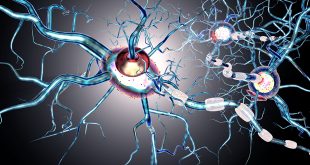Around 40% to 50% of people with type 1 or type 2 diabetes develop neuropathy within 10 years of diagnosis. This means all of us in the diabetes community need to stay on top of the latest news about the condition. We’ve gathered some key highlights right here.
What is diabetic neuropathy?
Neuropathy is damage to the nerves – usually in the hands and feet - resulting in numbness, tingling and pain. It is a common complication of diabetes, and is generally thought to be caused by high blood glucose. Recent studies suggest that reduced blood flow to the nerves may also play a role.
There are different types of neuropathies. Some affect a number of areas on both sides of the body, and others only attack one nerve.
Common symptoms
Diabetic neuropathy often starts out as a numb or prickly feeling in the feet and legs. Alternatively, there may be an over-sensitivity to touch. For example, individuals with neuropathy may be bothered by the touch of bed sheets or certain clothes.
Neuropathy can become very painful as it progresses. It can also result in complications like undetected foot ulcers, sometimes eventually leading to the need for amputation.
Reducing the risk of neuropathy
Effective blood glucose management is the best way to reduce the risk of neuropathy, especially with type 1 diabetes. Contributing risk factors include obesity, smoking, and consistently high cholesterol and blood pressure levels.
Unfortunately, some individuals will develop neuropathy despite effective diabetes management.
Screening recommendations
The 2013 Clinical Practice Guidelines recommend that screening for neuropathy should begin at diagnosis of type 2 diabetes, and be repeated every year. For people with type 1 diabetes, annual screening is recommended after five years from diagnosis.
Treatment for diabetic neuropathy
There is currently no proven way of repairing the damaged nerves of neuropathy. Treatment revolves around maintaining excellent diabetes management through medications and healthy lifestyle practices, together with pain management therapies.
There are a number of pain management treatments designed for neuropathy. These include oral medications (such as anticonvulsants, antidepressants, and prescription pain medication), skin creams, and skin sprays. Some people also claim success from alternative pain management therapies such as meditation or biofeedback.
Advances on the horizon
A number of promising research studies and clinical trials are currently in progress, looking at both neuropathy causes and treatments.
A study at the University of Calgary led by Dr. Douglas Zochodne is investigating how extremely low, local levels of insulin can act on skin nerve fibres and lead to regrowth. The hope is to find new ways to stop or reverse nerve damage.
Another small study at the same university has shown beneficial results using a new drug therapy for this condition called nabilone to treat nerve pain.
In Winnipeg, Dr. Paul Fernyhough has discovered that an anti-inflammatory medication helps repair damaged nerve endings in the skin of rats. Continued research may lead to the use of anti-inflammatory medications for neuropathy in humans.
There are also multiple ongoing studies and clinical trials in North America and around the globe looking at ways to improve blood flow to the nerves.
Quick tip
When neuropathy has been diagnosed, effective foot care is critical to help reduce the risk of complications. For more information and some great tips, see Dr. Maureen Clement’s expert blog article on this site FEET…Love them or Lose them! You may also find the Foot Check Tracker, in the Diabetes Self-Management Tools area of this website, a helpful tool to remind you to check your feet on a daily basis.
You can also get more detailed information about neuropathy in Dr. Clement’s excellent blog Diabetes can get on your nerves: what is diabetic neuropathy?
 Diabetes Care Community Learn, connect and care
Diabetes Care Community Learn, connect and care



